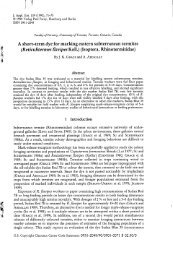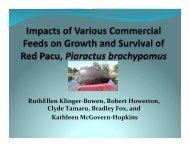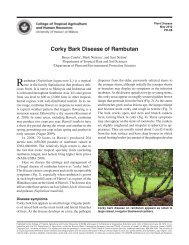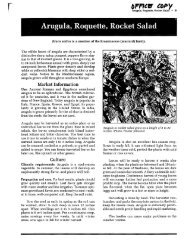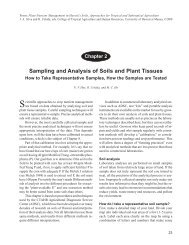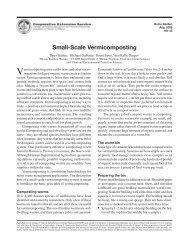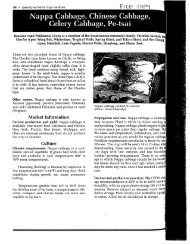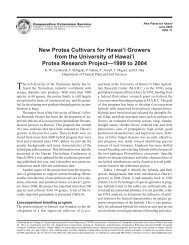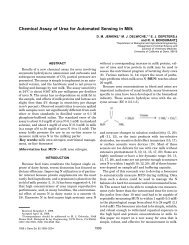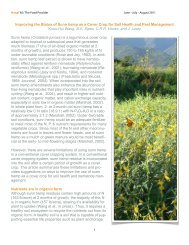Dasheen Mosaic of Edible and Ornamental Aroids - College of ...
Dasheen Mosaic of Edible and Ornamental Aroids - College of ...
Dasheen Mosaic of Edible and Ornamental Aroids - College of ...
You also want an ePaper? Increase the reach of your titles
YUMPU automatically turns print PDFs into web optimized ePapers that Google loves.
UH–CTAHR <strong>Dasheen</strong> <strong>Mosaic</strong> <strong>of</strong> <strong>Edible</strong> <strong>and</strong> <strong>Ornamental</strong> <strong>Aroids</strong> PD-44 — Aug. 2008<br />
Conspicuous necrotic <strong>and</strong> chlorotic feathering along leaf veins <strong>of</strong> a dasheen variety (Photo: S. Nelson)<br />
Symptom expression, infection, <strong>and</strong><br />
disease effects<br />
There may be some overlapping for symptom expression<br />
among plant genera; variability in symptom expression<br />
may depend on the host, the particular strain <strong>of</strong> DsMV,<br />
<strong>and</strong> the environment. For example, when severely diseased,<br />
Philodendron may exhibit vein clearing that<br />
resembles chlorotic feathering. Also, symptoms may be<br />
intermittent or vary seasonally. For taro, two or three<br />
leaves may show symptoms <strong>and</strong> then apparently healthy<br />
leaves are produced, or leaves may alternate between<br />
asymptomatic <strong>and</strong> symptomatic on the same plant.<br />
The pathogen infects leaves, stems, <strong>and</strong> petioles. The<br />
disease results in reduced photosynthesis, reduced corm<br />
size or yield, reduction in leaf number or size, deformed<br />
leaves, <strong>and</strong> stunted plants.<br />
4<br />
Disease cycle for dasheen mosaic<br />
Dispersal: DsMV is dispersed by several species <strong>of</strong><br />
aphids, by the movement <strong>of</strong> infected plants; as infected<br />
plant sap on pruning tools.<br />
Inoculation: DsMV arrives at the site <strong>of</strong> infection (a<br />
wounded plant cell) in an aphid’s mouthparts or on<br />
an infested cutting tool.<br />
Infection: DsMV enters a wounded plant cell either by<br />
aphid injection or on an infested tool.<br />
Disease development: Virus particles multiply within<br />
plant host cells, eventually resulting in symptom<br />
development. Virus particles move between adjacent<br />
cells via plasmodesmata <strong>and</strong> long-distance within a<br />
plant via the vascular tissues.<br />
Pathogen reproduction: The virus particles replicate by<br />
usurping the plant cell’s DNA <strong>and</strong> protein-synthesizing<br />
capacities.



